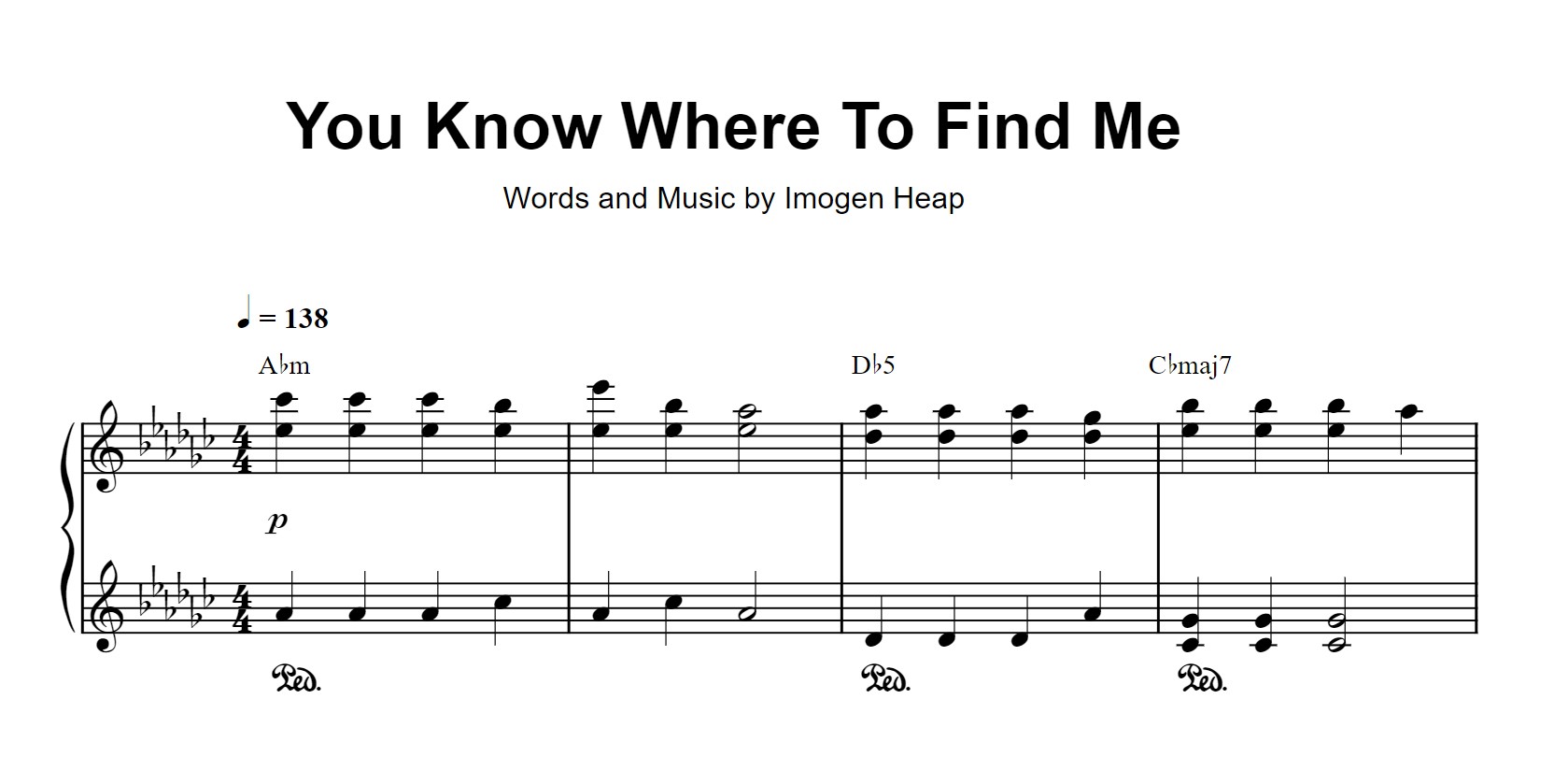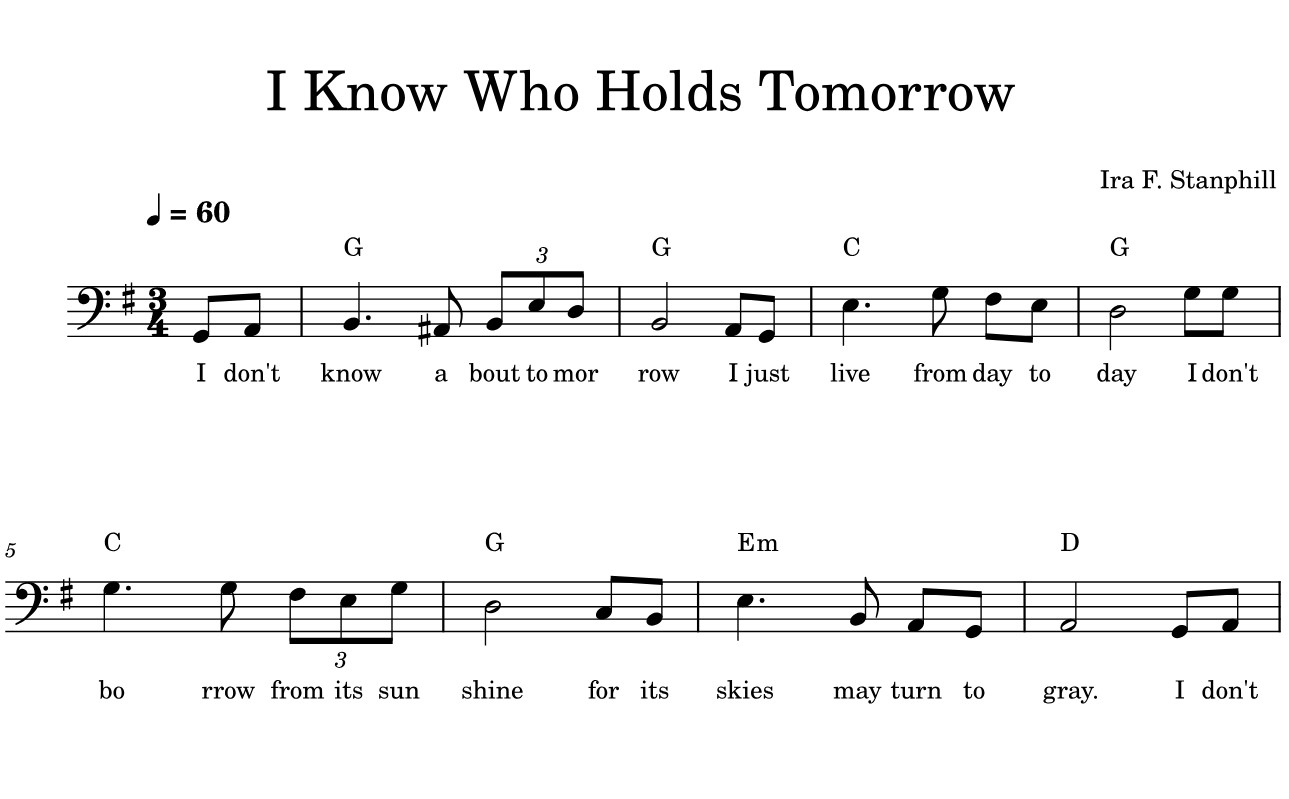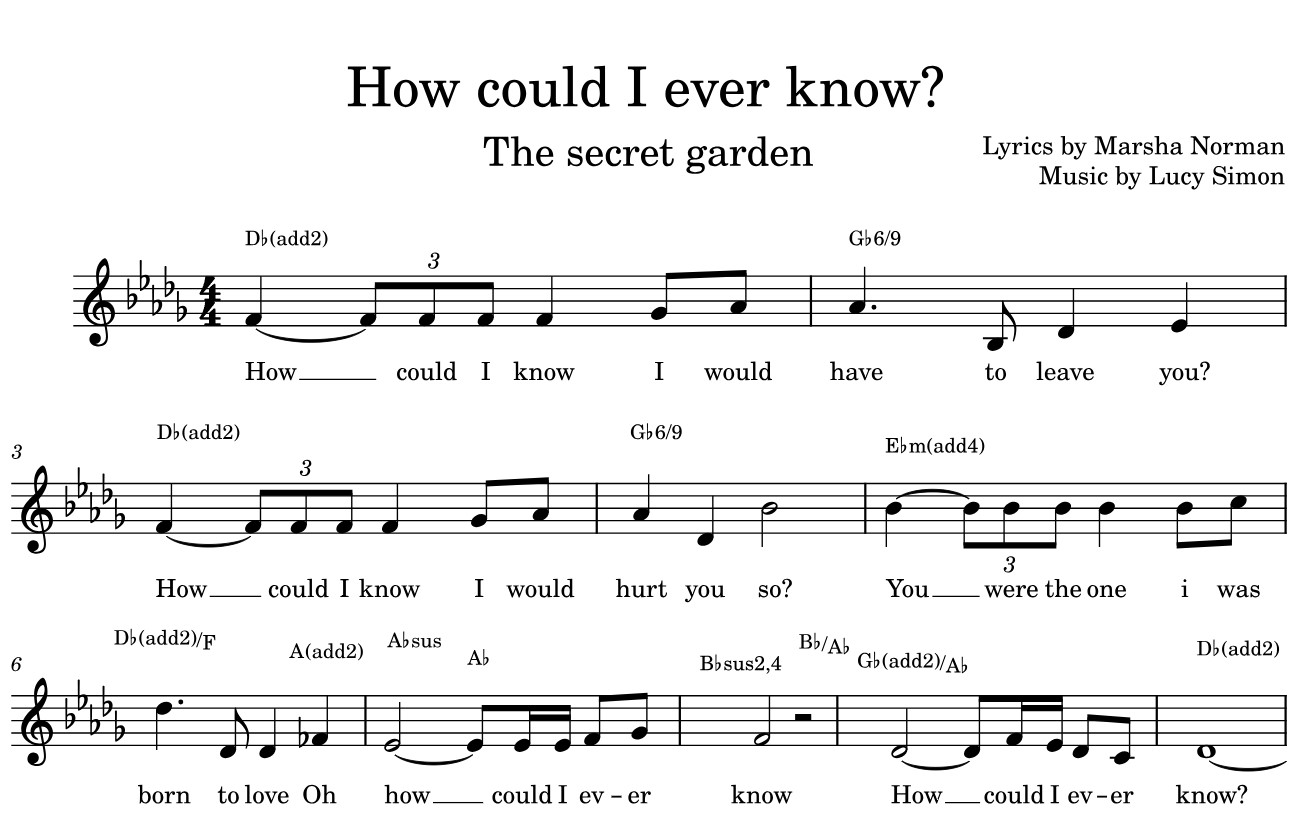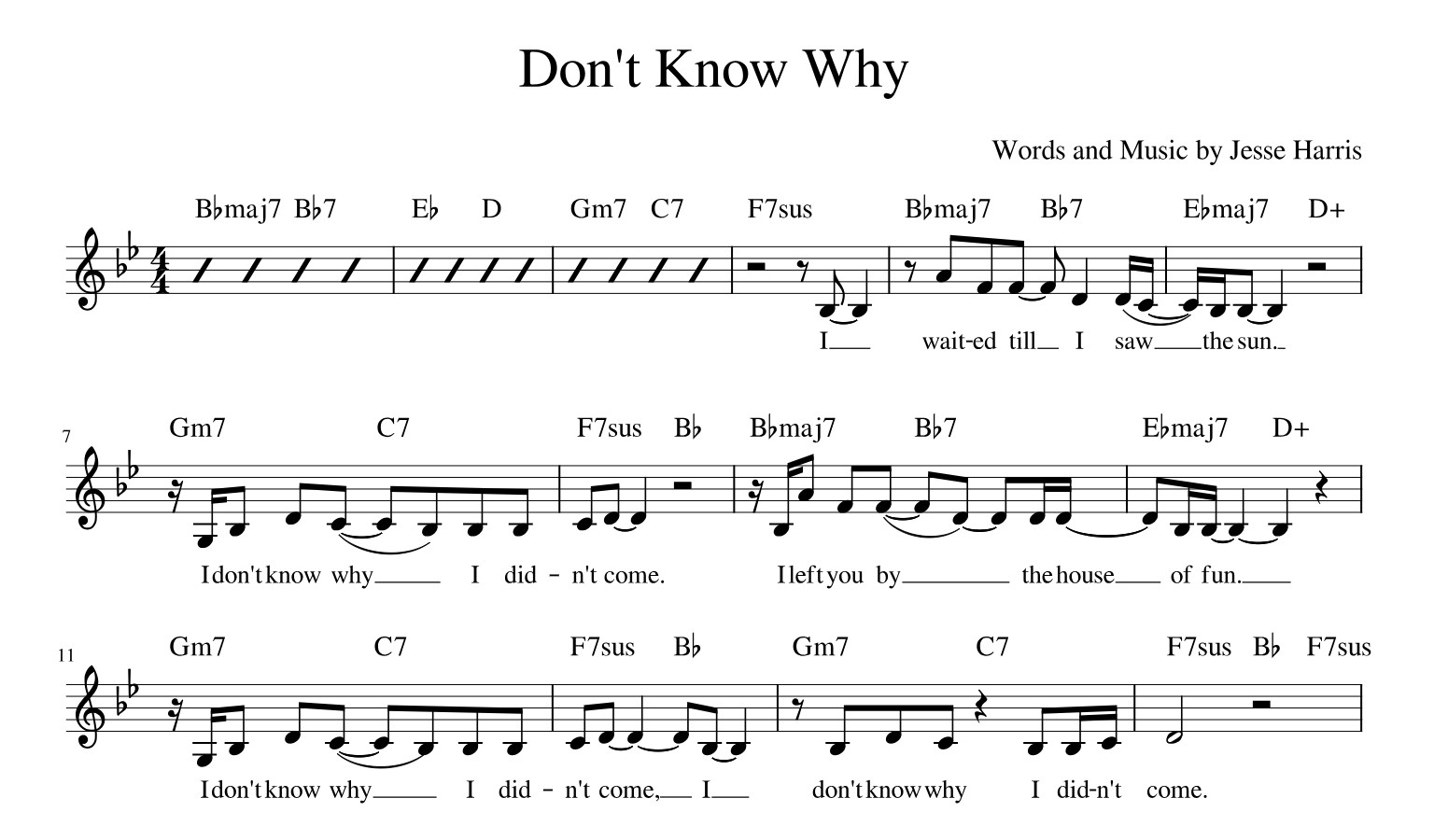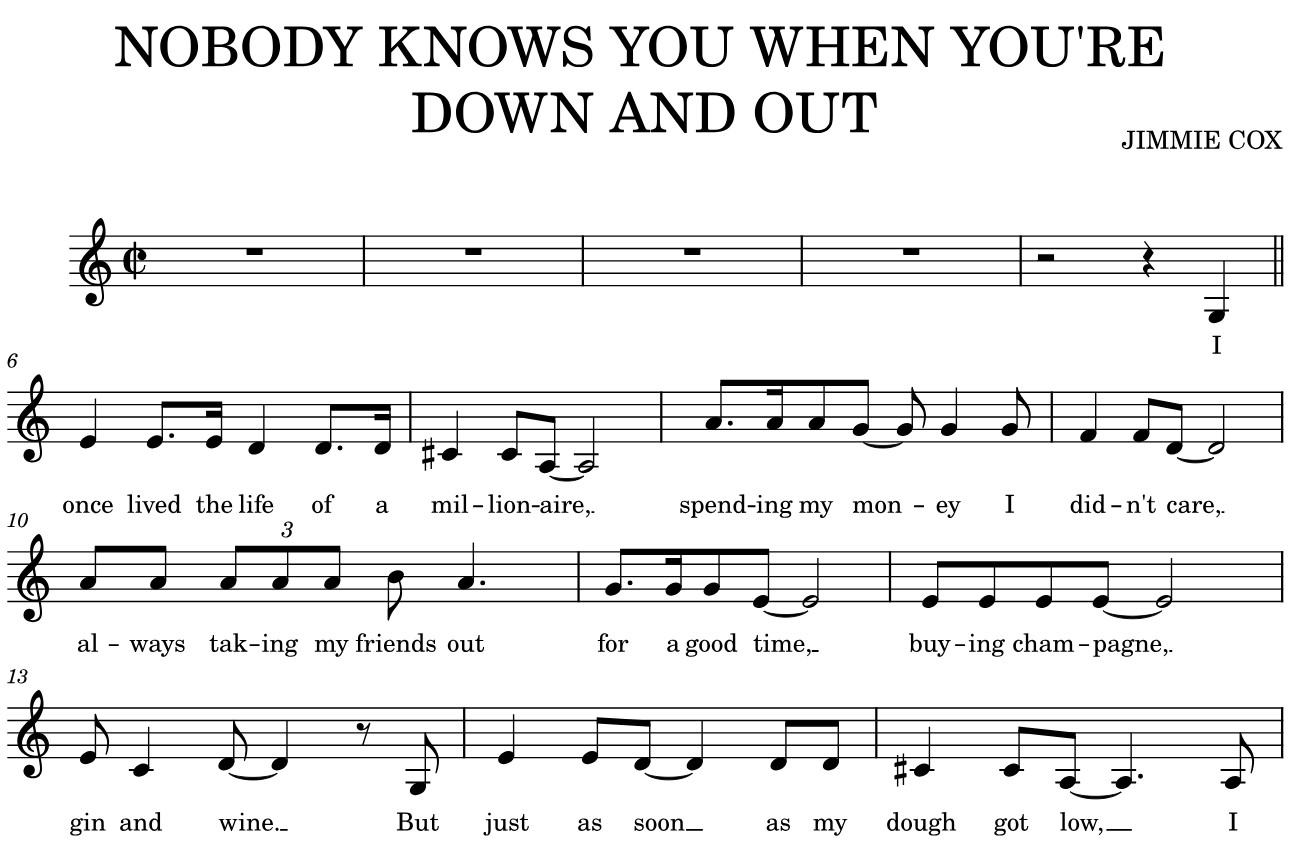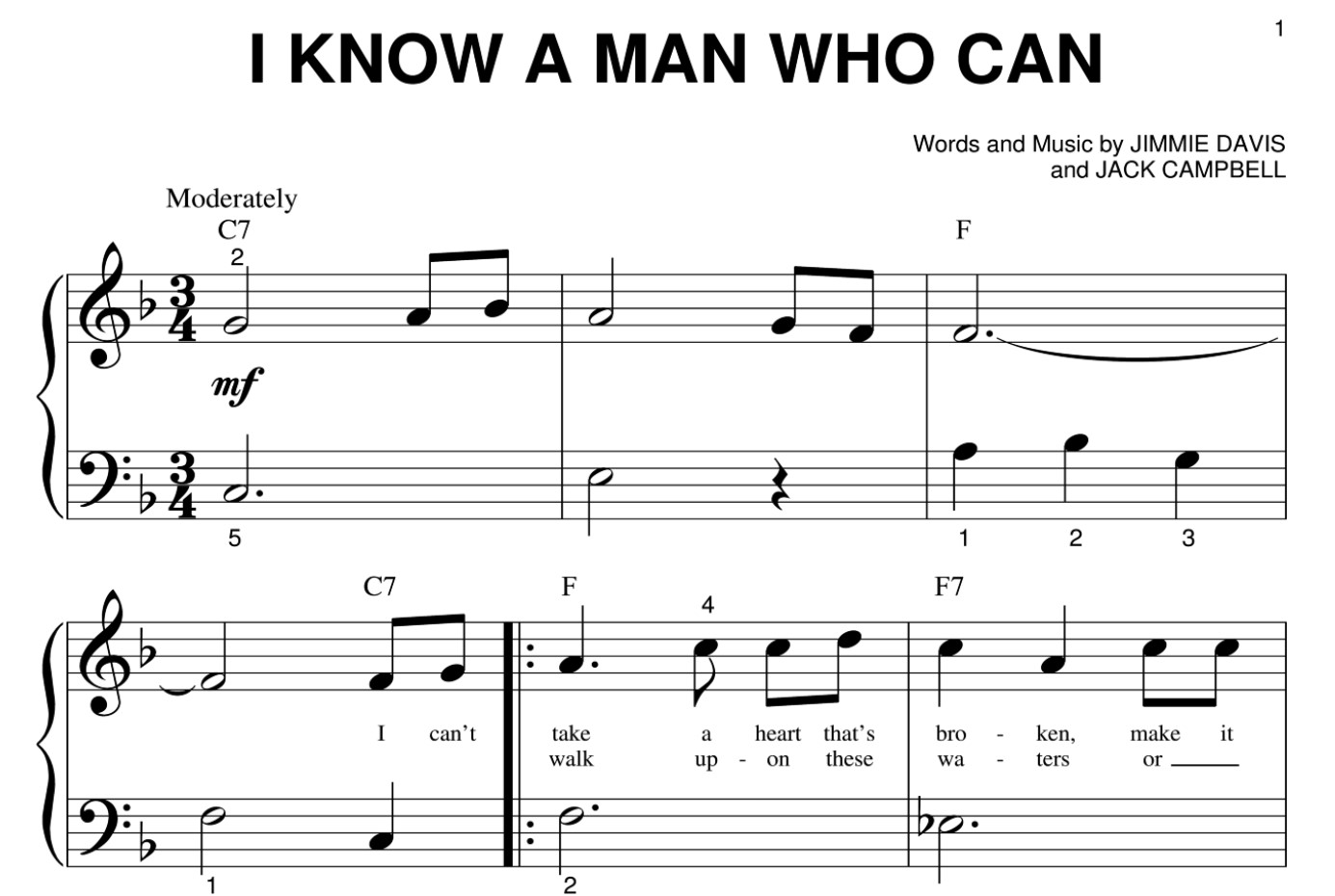Home>Production & Technology>Sheet Music>How To Know What Key Sheet Music Is In


Sheet Music
How To Know What Key Sheet Music Is In
Published: December 2, 2023
Learn how to determine the key of any sheet music with our easy-to-follow guide. Discover the secrets to unlocking the perfect harmony in your musical compositions.
(Many of the links in this article redirect to a specific reviewed product. Your purchase of these products through affiliate links helps to generate commission for AudioLover.com, at no extra cost. Learn more)
Table of Contents
Introduction
Welcome to the world of sheet music! Whether you’re an accomplished musician or just starting out, understanding the key of a piece is essential for a successful performance. The key provides valuable information about the tonal center and harmonic structure of a composition, allowing you to navigate through the music with confidence.
In this article, we will explore the concept of the key in sheet music and discuss different methods to identify it. From interpreting key signatures to analyzing chords, we will provide you with the knowledge and tools necessary to determine the key of a piece.
Knowing the key has numerous benefits. It allows you to anticipate the notes and chord progressions, making sight-reading easier and more accurate. Additionally, understanding the key helps musicians communicate and collaborate effectively, ensuring a harmonious performance. Whether you’re a soloist, ensemble member, or music teacher, a solid grasp of key identification is a valuable skill to possess.
So, whether you’re sitting in front of a piano, holding a guitar, or preparing to conduct an orchestra, let’s dive into the fascinating world of sheet music keys and discover the magic they hold!
What is a Key in Sheet Music?
In the context of sheet music, a key refers to the tonal center or the main note around which a composition revolves. It determines the scale, harmony, and overall mood of a piece of music. When we talk about the key of a song or composition, we are referring to the specific set of musical notes and chords that are used throughout the piece.
Every key is based on a particular musical scale, such as the major scale or the minor scale. The key gives musicians a framework to understand and interpret the music by providing a set of guidelines for which notes and chords are considered consonant and which ones may introduce dissonance.
For example, in the key of C major, the tonal center is the note C. The C major scale consists of the notes C, D, E, F, G, A, and B, with C being the starting and ending note. When a piece is in the key of C major, the composer or arranger typically uses chord progressions and melodic patterns based on those notes, creating a sense of cohesion and musicality.
Similarly, in the key of A minor, the tonal center is the note A, and the A minor scale is used as the basis for creating melodies and harmonies in that key. Understanding the key of a piece is like having a map that guides musicians in playing the appropriate notes and chords in order to capture the intended mood and emotion of the composition.
The key of a piece is usually indicated at the beginning of the sheet music using a key signature, which is a series of sharps or flats placed on the staff. However, it’s essential to note that some pieces may modulate or change keys throughout, adding an extra layer of complexity and variety to the music.
Now that we have a basic understanding of what a key is in sheet music, let’s explore why it is important to know the key before playing or performing a piece.
Importance of Knowing the Key
Knowing the key of a piece is crucial for several reasons. It provides musicians with valuable information about the harmonic structure, melodic patterns, and overall tonal center of a composition. Here are some key reasons why knowing the key is essential:
- Transposition: Understanding the key allows you to transpose a piece of sheet music to a different key, making it more suitable for your instrument or vocal range. By knowing the original key, you can easily adapt the music to your desired key without losing the intended harmonic progression and structure.
- Sight-Reading: When sight-reading a piece of music, knowing the key helps you anticipate the notes and chords that are likely to appear next. It allows you to quickly identify recurring patterns and shapes, making the sight-reading process more efficient and accurate.
- Accompaniment: If you’re accompanying another musician or vocalist, knowing the key provides a foundation for creating harmonies and supporting their performance. By understanding the key’s tonal center and chord progressions, you can instinctively choose appropriate chords and melodic lines to enhance the overall musicality.
- Improvisation: Knowing the key is crucial for improvisation and soloing. It empowers you to confidently explore different scales, modes, and melodic ideas that are compatible with the key. Improvisation becomes easier and more cohesive when you have a solid grasp of the underlying key structure.
- Communication: When collaborating with other musicians, knowing the key facilitates effective communication. It allows you to discuss musical ideas, chord progressions, and harmonic choices using a common language. This makes rehearsals and performances smoother and more cohesive.
By understanding the key of a piece, you gain a deeper appreciation for its musical structure and can interpret it with greater accuracy and confidence. It opens up avenues for creativity and expression, enabling you to fully convey the intended emotions and dynamics of the composition.
Now that we understand the importance of knowing the key, let’s delve into the different methods to identify the key in sheet music.
Musical Notes and Scales
In order to understand how keys work in sheet music, it is important to have a basic knowledge of musical notes and scales. Notes are the building blocks of music, and scales are organized patterns of notes that create different tonalities.
The most common scale used in Western music is the major scale. This scale consists of a specific pattern of whole and half steps, resulting in a sequence of seven different notes (also known as degrees) that span an octave. The major scale follows the pattern: whole step, whole step, half step, whole step, whole step, whole step, half step.
For example, in the key of C major, the notes in the scale are C, D, E, F, G, A, and B. In this case, C is the tonic or the starting note of the scale, and it also represents the tonal center or key of the composition.
Another important scale is the minor scale, which also has a specific pattern of whole and half steps but results in a different tonality. The natural minor scale follows the pattern: whole step, half step, whole step, whole step, half step, whole step, whole step.
For instance, in the key of A minor, the notes in the scale are A, B, C, D, E, F, and G. Here, A serves as the tonic and the tonal center of the composition.
By understanding the patterns of major and minor scales, you can recognize the tonal center or key of a piece. Observing the arrangement of notes within a composition can give you clues about the key signature, chord progressions, and overall harmonic structure.
In addition to major and minor scales, there are also other scales like pentatonic scales, blues scales, and modes, each with its own unique pattern of notes. Familiarizing yourself with these scales and their corresponding tonal centers will greatly contribute to your ability to identify and understand the key of a piece.
Now that we have covered musical notes and scales, let’s explore how to identify the key in sheet music using key signatures.
Identifying the Key by Key Signature
Key signatures are an essential tool for identifying the key of a piece in sheet music. They are represented by a series of sharps (#) or flats (b) placed at the beginning of each staff, right after the clef symbol. The key signature provides valuable information about the tonal center and the specific notes that will be altered throughout the composition.
Key signatures are typically placed on the staff before the first measure of a piece and remain consistent throughout unless there are modulations or key changes indicated. They help musicians determine the key without needing to analyze each individual note or chord, saving time and effort.
The number of sharps or flats in the key signature corresponds to a specific key. For example, if there is one sharp in the key signature, it denotes the key of G major or E minor. The sharp in this case is placed on the F line of the staff, indicating that every F note played in the composition should be raised by a semitone, resulting in an F#.
On the other hand, if there are two flats in the key signature, it signifies the key of B-flat major or G minor. The flats are placed on the B and E spaces of the staff, indicating that every B and E note played should be lowered by a semitone, resulting in Bb and Eb, respectively.
It is important to familiarize yourself with the order of sharps and flats in key signatures. The order of sharps is F# – C# – G# – D# – A# – E# – B#, while the order of flats is Bb – Eb – Ab – Db – Gb – Cb – Fb. The last sharp or flat in the sequence serves as a point of reference for determining the key.
By observing the key signature, it is possible to quickly identify the key of a piece. However, it is important to note that key signatures may change within a composition, indicating a modulation or shift to a different key. In such cases, the new key signature will be indicated at the point of modulation.
Now that we have explored how to identify the key using key signatures, let’s discuss another method – identifying the key by analyzing chords.
Identifying the Key by Chords
In addition to key signatures, another method of identifying the key in sheet music is by analyzing the chords that are used in the composition. Chords are built from the notes of a particular key, making them a valuable indicator of the tonal center.
When analyzing chords to determine the key, the first step is to identify the triads (three-note chords) that are most frequently used throughout the piece. The most common triads found in major keys are the I (tonic), IV (subdominant), and V (dominant) chords. In minor keys, the most common triads are the i (tonic), iv (subdominant), and V (dominant) chords.
For example, if you notice that the chords C, F, and G are frequently used in a piece, this suggests that the key could be C major. Similarly, if you observe the chords A minor, D minor, and E major, this indicates the key of A minor.
By analyzing the chords, you can also uncover any modulations or key changes within the composition. A sudden change in the pattern of chords may indicate a shift to a different key. It’s important to pay attention to these moments and identify the new set of chords associated with the new key.
Furthermore, analyzing the progression and relationship between chords can provide additional clues to identify the key. Understanding the diatonic chords (chords built solely from the notes of a particular key) can help confirm the key. In major keys, the diatonic chords are typically major, minor, and diminished triads. In minor keys, the diatonic chords include major, minor, and diminished triads, as well as the dominant seventh chord built on the fifth degree.
Keep in mind that analyzing chords to identify the key requires some knowledge of chord theory and music theory in general. Familiarizing yourself with common chord progressions and their corresponding keys will enhance your ability to identify the key through chord analysis.
Now that we have explored how to identify the key by analyzing chords, let’s move on to another method – using key finder tools.
Using a Key Finder Tool
In addition to analyzing key signatures and chords, another efficient method of identifying the key in sheet music is by utilizing key finder tools. Key finder tools are software applications or websites that are specifically designed to provide instant key identification for a given piece of music.
These tools utilize advanced algorithms and music analysis techniques to analyze the notes, harmonies, and patterns present in the sheet music. By inputting the musical notes or chords into the tool, it can quickly determine the key of the composition.
There are a variety of key finder tools available online, ranging from simple chord identifier apps to more sophisticated music analysis software. Some tools require manual input of musical notes or chords, while others can analyze an audio recording of the music to extract the key information.
Using a key finder tool can be particularly helpful when dealing with complex or unfamiliar compositions. It can save time and provide accurate results, especially when the key signature or chords are not immediately obvious.
However, it is important to note that while key finder tools can be very useful, they should not replace the development of your own musical ear and knowledge. It’s still essential to understand key signatures, chords, and music theory concepts, as these tools are meant to assist and enhance your skills rather than replace them.
When using a key finder tool, input the notes or chords accurately and ensure that the tool is providing the correct key. Compare the results with your own analysis and use it as a learning tool to further develop your understanding of key identification.
Now that we have discussed using key finder tools, let’s summarize what we have learned in this article.
Conclusion
Understanding the key is a fundamental aspect of reading and interpreting sheet music. It provides valuable information about the tonal center, scales, chords, and overall structure of a piece. Whether you rely on key signatures, chord analysis, or key finder tools, having the ability to identify the key will greatly enhance your musical experience and performance.
By knowing the key, you can easily transpose music to different keys, sight-read with confidence, accompany other musicians effectively, and improvise harmonically. Additionally, understanding the key allows for better communication and collaboration with fellow musicians, ensuring a cohesive and expressive performance.
Throughout this article, we explored the concept of keys in sheet music, discussing key signatures, musical notes and scales, chord analysis, and the use of key finder tools. These methods provide different approaches to identifying the key, and by combining them, you can develop a comprehensive understanding of the tonal center of a composition.
Remember, while key finder tools can be helpful, it is important to develop your own musical ear and knowledge. Actively engaging with the music and analyzing key signatures and chords will strengthen your grasp of identifying the key.
So, whether you’re a pianist, guitarist, singer, or conductor, continue to explore the fascinating world of sheet music and the keys within. The more you understand and appreciate the keys, the more you can elevate your musical performances and share the beauty of music with others.

